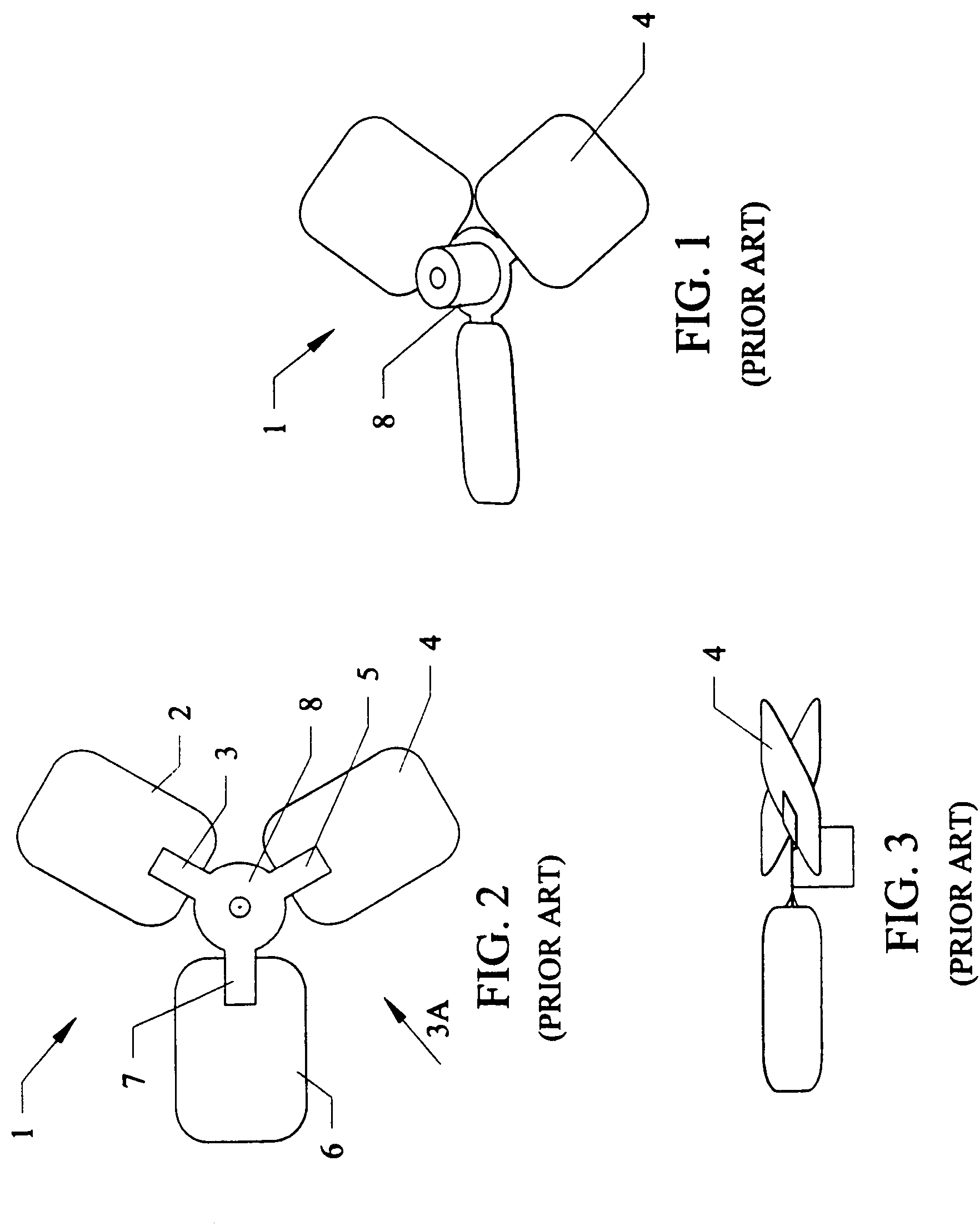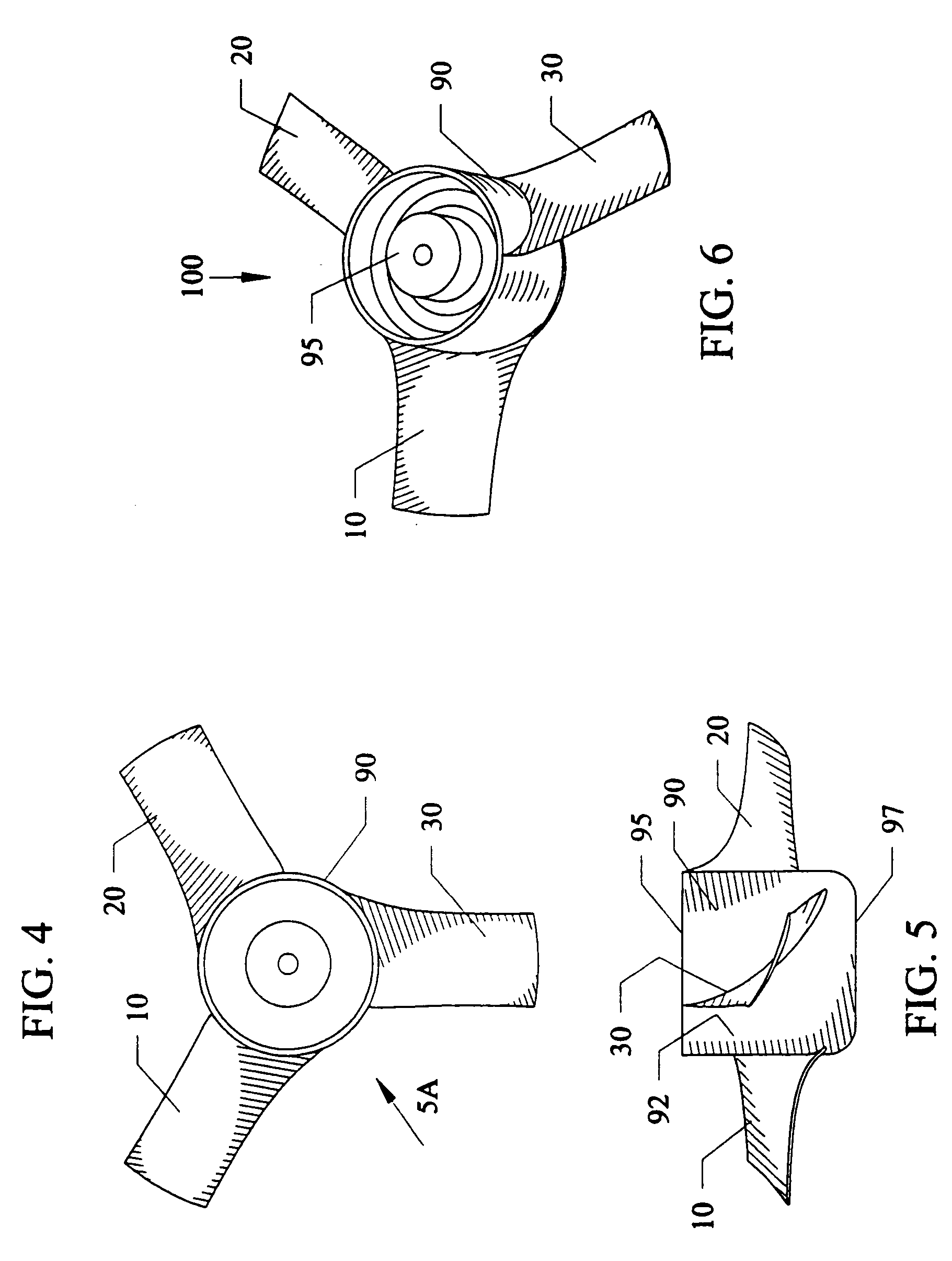High efficiency air conditioner condenser fan
- Summary
- Abstract
- Description
- Claims
- Application Information
AI Technical Summary
Benefits of technology
Problems solved by technology
Method used
Image
Examples
Embodiment Construction
[0068] Before explaining the disclosed embodiments of the present invention in detail it is to be understood that the invention is not limited in its application to the details of the particular arrangements shown since the invention is capable of other embodiments. Also, the terminology used herein is for the purpose of description and not of limitation.
[0069] Unlike the flat planar stamped metal blades that are prevalent in the prior art as shown in FIGS. 1-3, the subject invention can have molded blades that can be twisted such as those formed from molded plastic, and the like.
[0070] Novel fan blades attached to a condenser hub can have the novel blades run at approximately 840 rpm producing approximately 2200 cfm of air flow and 2800 cfm at 1100 rpm.
[0071] These results come only from an improved fan system and generally requires no change in the tooling of non-fan components for the condenser. We used the original fan motor to demonstrate the power savings, although greater ...
PUM
 Login to View More
Login to View More Abstract
Description
Claims
Application Information
 Login to View More
Login to View More - R&D
- Intellectual Property
- Life Sciences
- Materials
- Tech Scout
- Unparalleled Data Quality
- Higher Quality Content
- 60% Fewer Hallucinations
Browse by: Latest US Patents, China's latest patents, Technical Efficacy Thesaurus, Application Domain, Technology Topic, Popular Technical Reports.
© 2025 PatSnap. All rights reserved.Legal|Privacy policy|Modern Slavery Act Transparency Statement|Sitemap|About US| Contact US: help@patsnap.com



